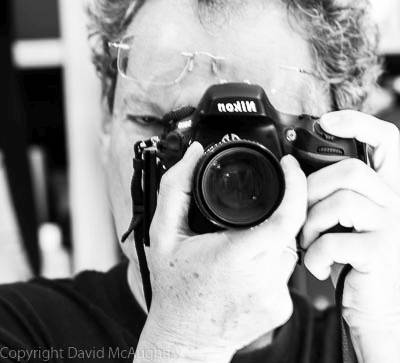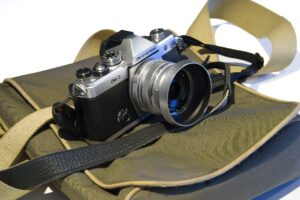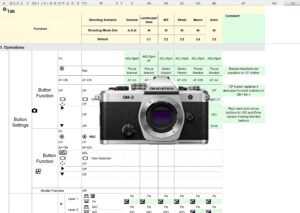OM1 vs R5, A1 and Z8: which is the best all-round system?

In a separate post, I posed the question of what to take for the once-in-a-lifetime camera trip. Can one camera system be the best at all my photography genres – specifically, Birds in Flight (BIF), Landscape, Astro, Street and Macro? The OM Systems OM1 is a brilliant all-rounder, but some other cameras have more pixels for landscape, and (in principle) lower noise for BIF. It would be attractive to have a single system with higher resolution for landscape, but that also is as good or better than the OM1 for BIF. At the moment, I am able to buy any of the main contenders, specifically the Canon R5, the Sony A1 and the Nikon Z8.
So would any of these new high-resolution camera fit the bill? The only thing that matters to me is data, not opinion, so I have done a data-driven analysis of the OM1 vs R5, A1 and Z8 for BIF, and present the results here.
The new breed of stacked sensor, high pixel count cameras
In prior years, high pixel count cameras like the Sony A7R v, or the Nikon Z7 were great for landscape but poor for BIF because of their rolling shutter and slow burst rates (usually between 5-9 frames per second).
A new breed of stacked sensors with much faster readout has arrived in flagship cameras from all the major brands, which provide high pixels for landscape but fast burst rates for BIF. These are the Canon R5 (45 mpx/20 fps), the Sony A1 (50 mpx/30fps), and the Nikon Z8 (45mpx/20fps). The high pixels mean the cameras have an advantage over the OM1 for detailed landscape shots, but how well do they work for BIF compared to the OM1?
The comparison base: OM1 vs R5, A1 and Z8 BIF lenses
I want a fast, lightweight system for BIF. The camera and lens have to weigh under 2.5kg, and preferably around 2kg. This is simply because I have tried 3-4kg combinations and they are slow to move and tiring to hold.
My preferred focal length is 600mm to 800mm. Less than 600mm and most birds are too small in the frame. More than 800mm and it is impossible (for me) to follow the birds as they fly. So for the OM1 I use the 300mm f4 (600mm FFE), plus the MC14 teleconverter to get it to 420mm f5.6 (840mm FFE) when needed. This combination weighs around 2kg at either focal length. It is also smaller, lighter, and sharper than the famous and expensive 150-400 f4.5 lens from OM systems and as accurate in focus as shown in this post.
In the Sony, Nikon and Canon ranges, there are three kinds of long telephoto lens available for BIF. The first are fast f4, 600mm primes, which typically weigh 3kg alone and cost £10,000 and up. These are excluded on weight grounds alone, let alone cost. Another option is the Sony 300 f2.8 GMii, which costs nearly £6000 in the UK, but weighs only 1495g. However, to get to 600, it requires the Sony TC2.0 teleconverter with a 2-stop penalty, so ends up at f5.6.
The second are zooms up to 800mm which are lighter, but also slower, typically with apertures at 600mm of f7.1 and at 800mm of f9. Nikon, Canon and Sony offer these. The candidates are the Canon 100-500 f4.5-f7.1, and 200-800 f6.3-f9, the Sony 200-600 f5.6-6.3, and the Nikon 180-600 f5.6-6.3.
The problem for Nikon is that the Z8 is a very heavy camera at 900g, and their 180-600mm zoom weighs over 2kg, so the combination is well outside the hand-holding range and a full kg heavier than the OM1 combination.
However, Nikon do have a class of slower, sharp but lightweight “PF” primes – specifically the 500mm f5.6 (1585g), and the 600mm f6.3 (1390g), which are lightweight and very sharp and thus directly comparable to the OM 300mm f4 prime. Canon also have slow 600mm and 800mm primes but these are both fixed at a ludicrous f11, meaning they are non-competitive with the OM1, despite being (deservedly) cheap.
From this list, I evaluated the Canon R5 with the 100-500 f4.5-f7.1,and the 200-800 f6.3 to f9 zooms, the Nikon Z8 with the 500mm PF 5.6 and 600mm PF f6.3,and the Sony A1 with the 200-600mm f5.6-6.3 zoom ( a combination that is just under 3kg, but is the one of the only only viable options for Sony). I rejected the Sony 300 f2.8 prime as a candidate because of its cost (total system cost = £10,000), but also because at 600mm f5.6 it is only 0.3 stops faster than the Nikon 500 or 600 PF lenses at 600mm, but with a 2x converter impacting image quality.
The Full Frame advantage reduces with stacked sensors
On the face of it, there is a clear noise advantage for full-frame cameras, as they have twice the nominal sensor area, so they should have a two stop advantage. In practice, the noise difference is much less than two stops, as can be seen from DxO test data (the only standardised source of noise data across all camera brands).
DxO measures the noise from a sensor as the signal-to-noise ratio, or SNR. The scale is in decibels (dB), a logarithmic scale where SNR doubles (i.e.increases by one stop) every 6 dB. The higher the SNR numbers, the lower the noise. Note: it’s easier to look at the graph below to visualize this. SNR is the vertical axis in dB, and real ISO (not the camera indicated ISO, which is always undercalled by manufacturers) on the horizontal axis. The higher the ISO, the higher the noise and hence the lower the SNR number which is why the lines slope down from the lowest ISO to the highest.
Click on the image for a large version you can read data off, and click the link to go to the source DxO page for this comparison. DxO only allows 3 cameras per comparison, so I omitted the Sony A1 for the image and link. The A1 has identical noise to the other two, however.

The SNR lines for the R5, Z8, and A1 cameras are around 4dB, or 0.7 stop higher/better than for the OM1. So at the same ISO (e.g. 1600) the OM1 is 4 dB or 0.7 of a stop noisier than the other cameras. This is the vertical difference between the curves.
Because of the slope of the lines, the horizontal difference, (i.e the ISO difference at the same SNR) is 1.3 stops higher. This means that at any given SNR noise level (say 30dB), the R5/A1 ISO will be 1.3 stops higher, which is an advantage in low light. Between ISO 1600 and ISO 6400 (the key BIF ISOs) the Nikon Z8 advantage is under one stop because of its slightly noisier sensor.
The data above are determined by DxO for mechanical shutter actuation, at the full 14 bit lossless output of the sensor. However, some of this full frame advantage goes away for BIF shooting. In order to produce 45-50Mpx resolution images at 20 frames per second or more, the Canon R5 and Sony A1 have to use electronic shutter with lower quality 12 bit lossy compressed files, rather than the 14-bit lossless files tested by DxO.
There is no data for this, but my estimate is that this increases noise by 2dB, reducing the noise advantage of these cameras to around half a stop at the same ISO and to 1 stop at the same noise level. The Nikon Z produces 14 bit files with no loss of quality, but as we have seen, it has more noise at any given ISO than the other cameras.
Another significant factor with high pixel count full frame cameras is the effect of cropping in to achieve greater magnification. One of the huge benefits of high-resolution cameras is to crop in and use the centre APSC/DX part of the sensor to make a 600mm lens equivalent to 900mm for example. While this is a considerable benefit, the noise characteristics of the cropped sensor area are not the same as the full sensor as shown in this post. In fact, the cropped APSC/DX area of the Z8 has the same noise and DR as the OM1. So cropping is possible and useful, but has no noise advantage at all compared to the OM1.
Lens combinations with higher resolution FF alternatives to the OM1
Canon R5 with 100-500 f4.5 -7.1 or 200-800 f6.3-f9
This is a nice camera, now available for around £2500 2nd user. However, at 600mm the 100-500 zoom is at f7.1 and still requires an additional 20% crop to get to 600mm. F7.1 is 1.7 stops slower than the OM 300 at f4 and the 20% crop takes the aperture difference to 2 stops (estimated) so the combination is a net 1 stop worse than the 300mm f4/OM1. At 800mm, the sensor advantage completely disappears as the camera is in full APSC crop mode, and the sensor plus lens has noise that is 0.7 stops worse than the OM1/300mm + MC14 at f5.6. The combination is light though, at 2.1 kg.
The 200-800mm zoom from Canon at 600mm is at f8, or two stops worse than the OM1/300 f4 making the R5 noise one stops worse net. At 800mm the lens is at f9, or 1.3 stops worse, but with no crop, resulting in 0.3 stops worse noise than the OM1/300mm plus MC14 at f5.6. Moreover, the combination is very heavy at 2.8 kg
Neither lens provides a noise advantage over the OM1/300mm, and at either 600mm or 900 mm each combination has more noise. The overall cost is at least £4500 (for 2nd user items at eBay/MPB/Panamoz prices)
Nikon Z8 with 600PF f6.3 or 500PF f5.6
I already have a Nikon Z7 and Nikon Z lenses for when I need a higher resolution landscape or astro camera so this is a natural extension. The Z8 is also very reasonably priced again at around £2500 (MPB/Panamoz). However the 600 PF is extremely expensive at £3,500 at Panamoz. In addition, at 600mm the lens is at f6.3 or 1.3 stops slower than the 300 f/4, and this more than wipes out the 1 stop fZ8 sensor noise advantage. At 800mm, it needs to be in APSC mode where it is 0.3 stops worse than the OM1/300 TC14. Overall the cost of this system is high at around £6000, with no material benefit.
However, the older 500PF 5.6 is attractive. Although it requires the FTZ adaptor (125g), the performance and image quality are excellent. At 600mm (with a 20% crop) the net noise is 0.3 stops worse, and at 750mm (with a full APSC crop) it is the same as the Olympus, albeit at 750mm vs 840 for the OM1/300/MC14 combination. The 500PF is available at significantly less cost than the 600 PF at around £2000, so this is an interesting option. Moreover, the Z7 can manage 9 fps compared to the Z8 with 20 fps, so for a trip where BIF is a secondary target, it would not be necessary to buy a Z8.
Sony A1 with 150-600 f5.6-6.3
The A1 is again a great camera, but expensive at nearly £4000, although the 150-600 is a bargain at just over £1000 at Panamoz. The BIF noise story is identical to the Nikon Z8/600 PF, so no noise advantage, but the killer is the weight of the combination, which is 2.98kg, and far too heavy for me. Moreover, I have owned two of these lenses, and the focus performance is significantly slower than the 300mm f4 and the lens is a bulky lump to manoeuvre.
The overall cost of the system is around £5000 at eBay/MPB/Panamoz prices.
The fully Monty – data comparisons of all the above combinations (and more)
The full spreadsheet with all the data of the OM1 vs R5, A1 and Z8 comparison is shown below. It’s unreadable, at this size, but click it, and it will expand to full screen where you can read it easily on a PC or tablet.

What about a Zoom? How do you shoot shorter focal lengths?
For the rare occasions I require a zoom, for focal lengths up to 420mm, I use the amazing 40-150mm f2.8 (80-300 FFE) zoom on a second body with or without the MC14 teleconverter (120-420mm FFE) at f4). The 40-150 f2.8 is so much faster and lighter than the FF alternatives that there is no contest, and these shorter focal lengths were therefore excluded from the analysis.
A second option is to use the very sharp Panasonic 100-300 (200-600 FFE) f/4.0-5.6 on a second body. This remarkable and under-rated lens is at f4.9 at 200mm (400mm FFE), compared to f4 for the heavier 40-150 MC14 combination and f6.3 for the even heavier and costly Canon 100-500mm at 400mm focal length. There is almost no lens speed penalty in using this incredibly small and manoeuvrable lens, which is only 0.5 stops slower at 400mm FFE than the more expensive Olympus zoom, and a full 0.8 stops faster than the very expensive Canon.
Other genres and limitations of the FF cameras
While the OM1 manages all genres brilliantly, the full frame competitors are not such good all-rounders.
Macro: The Sony A1 (Mark 1) does not do focus bracketing at all. For the Z8 and R5, focus bracketing is a menu-only option and cannot be assigned to a button. It is therefore difficult/impossible to hand hold these cameras for macro work. The Z8 in particular is particularly handicapped at macro. For macro and other problems from a Z8 owner who also has an OM-1 see this video. On the OM1, focus bracketing and focus stacking can be each be assigned to a function button, and stacking menu options can be selected from the mode dial without going into the menu.
Additionally, all FF cameras suffer an inherent macro disadvantage against the OM system of having shallow depth of field and only half the magnification at any given focal length. There is no possibility of a practical FF lens that can match the 4:1 FFE macro equivalent and DoF of the OM 90mm macro lens for example.
BIF: The Z8 and R5 cannot show live over/under exposure “blinkies”. This means that only spot metering (more or less impossible on a flying bird), or Matrix metering (very inaccurate for a single bird) is available. White or black birds will invariably be incorrectly exposed. For sudden flight like hummingbirds, only the OM1 has pre-capture in Raw. The R5 Mk 1, Z8, and A1 Mk1 do not have pre-capture. This is an essential feature and while it is available on the mark 2 versions of these cameras, they are all more expensive, and with fewer pre-capture features.
Street: The Z8 weighs a kilo, and with the large 35mm f1.8 is far too heavy, and visible for street photography.
Landscape: the main win of the R5, Z8 and A1 is their 45-50 MPx high-resolution sensors and better dynamic range compared to the base 12-bit 20mpx OM1 sensor. However, for landscape, the OM1 can deliver 14-bit 50mpx or 80mpx high-resolution images with sharpness and dynamic range equal to any of the hi-res full frame systems. The limitation of the OM1 high-resolution mode is if there is any motion in the scene, for example, moving trees or grass.
Conclusion: OM1 vs R5, A1 and Z8
None of the new breed of high resolution fast output cameras, when used with lightweight telephoto lenses at 600mm or 800mm produces BIF output that is better than the OM1. In fact, they all have worse noise, no pre-capture mode, and the R5 and Z8 have inadequate exposure indication. In addition, none of them can match the frame rate of the OM1. The least worst combination at the best price seems to be the Nikon Z8/Z7 with the 500 PF prime.
In addition, all of the above fail in one or more of the other key genres like macro or street. So none of these options beats the OM1 as an all-rounder. And in landscape, the OM1 can produce high-res images that are the equal of the higher resolution bodies. The main limitation of the OM1 is in moving subjects, and in this context, a camera like the Z7 has an advantage.
Matching the camera system to the occasion
I can not, at the moment (November 2024), see any purpose in buying a Z8 as it does not get me a better system than the OM1/300 for BIF, is not needed for landscape (as I have a Z7), is unusable for street and impractical for macro.
In a separate post, I introduced the concept of “genre-first” photo trips. Here is how I will employ my various systems going forward.
- BIF-first trip, with Landscape/astro as a secondary opportunity. I will take the Olympus OM1 BIF system every time (with two bodies for a once-in-a-lifetime trip), and pack some Olympus landscape lenses for the landscape opportunity.
- Landscape/astro-first trip with BIF as a secondary opportunity.
- If I go on another one, I will take the Z7 kit for landscape and astro, but additionally bring the OM1, plus the Panasonic 100-300 (200-600 FFE) lightweight tele zoom for BIF. That will save 400g over the weight of a Nikon 500 PF, and get me a faster and more accurate BIF system that is ready to go.
- If I need a backup Nikon Z camera for a once-in a lifetime trip, I’ll just buy a Nikon Z6 for £500 (!!), but sell it again afterwards (as I did with my backup EM1mk iii for the Lofoten adventure).
- In the unusual situation where landscape and BIF have equal priority, I will take the Z7 for the former and the OM1/300 for the latter.
- Depending on the weight/space restrictions, I might still take an all-Olympus system as it will still get me great results in a smaller and lighter package, particularly with hi-res shot for landscape. This will be particularly true in an Arctic landscape with few moving trees or bushes.
- Open-ended multiple genre photo trip: OM1 system every time
- Travel-first multi-genre trip: OM-3 system every time.
Table of Contents block
Table of Contents
Section for SEO items I can’t be bothered to include in the main text
OM1 vs R5, A1 and Z8, OM1 vs R5, A1 and Z8, OM1 vs R5, A1 and Z8, OM1 vs R5, A1 and Z8, OM1 vs R5, A1 and Z8






